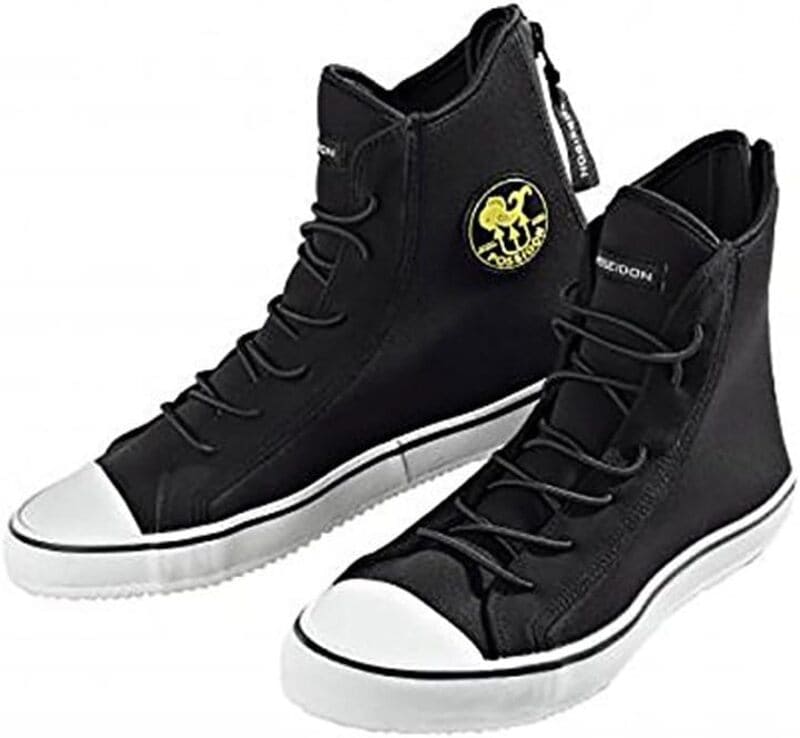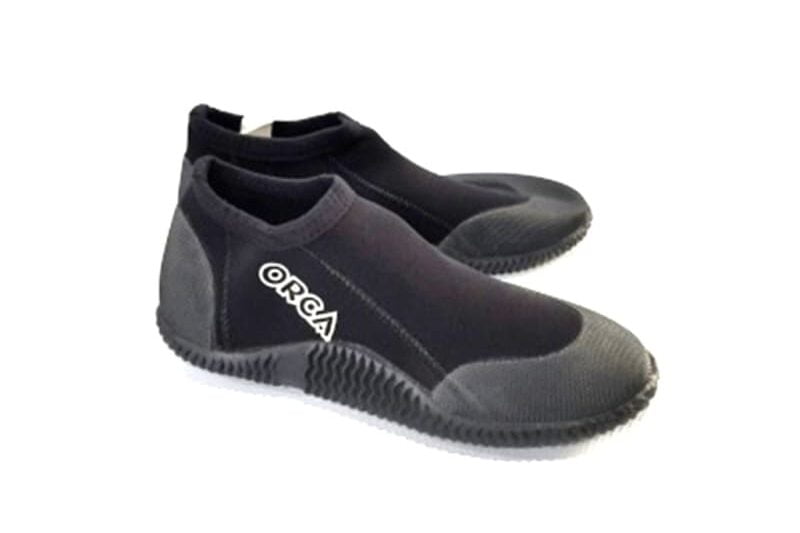Ultimate Pro Guide to Buying Dive Boots and Wetsuit Booties
One essential piece of gear that often goes unnoticed but plays a vital role in your comfort and safety underwater is dive boots and wetsuit booties. These specialized footwear options offer protection, warmth, and traction, allowing you to navigate various diving environments with confidence.
In this comprehensive guide, you will learn everything important about dive boots and booties, equipping you with the knowledge and insights needed to make an informed purchase. Whether you’re a beginner or a seasoned diver, understanding the key factors to consider when buying dive boots will enhance your overall diving experience.
Key Points from the Article:
- Importance of Dive Boots: Discover why dive boots and wetsuit booties are a crucial component of a diver’s gear, providing insulation, foot protection, and improved traction for water entry.
- Types of Dive Boots: Explore the different types of dive boots available, such as high boots, hard-soled boots, zippered boots, and rock boots, and learn which option suits your diving style and environment.
- Sizing and Fit: Understand the significance of finding the right size and fit for your dive boots, ensuring optimal comfort and preventing issues like blisters or cold feet when diving.
- Insulation and Thickness: Learn about the insulation properties of dive boots and wetsuit booties, including the neoprene thickness options and their benefits in varying water temperatures.
- Traction and Sole Design: The importance of traction and sole design, to ensure you get the right dive boots for the type of water entries and shore conditions you might encounter.
- Foot Protection and Support: Discover the various features that provide foot protection and support, such as reinforced toe caps, ankle support systems, and cushioning technologies, ensuring safety during dives.
- Maintenance and Care: Gain insights into the proper maintenance and care routines for dive boots, extending their lifespan and preserving their functionality.
- Choosing the Right Dive Booties: Explore the options for dive booties, which are lightweight alternatives to traditional dive boots, and understand their advantages for warm-water diving or use with full-foot fins.
By the end of this ultimate guide, you’ll be equipped with the necessary information to confidently select the perfect pair of dive boots or booties that meet your specific diving needs. So, let’s dive in and embark on a journey to elevate your underwater explorations with the right diving footwear!

When and Why Use Dive Boots?
Scuba diving boots, also known as wetsuit booties, are an essential part of a diver’s gear. They serve multiple purposes, including:
- Providing thermal insulation and keeping the feet warm in cold water.
- Offering protection against sharp objects, rocks, and marine life.
- Preventing chafing and blisters caused by fins.
- Enhancing traction and stability on slippery surfaces.
- Adding buoyancy on the legs and improving horizontal trim underwater.
Dive boots are suitable for divers of all levels, whether you’re exploring tropical reefs or diving in cold-water environments. Understanding the factors to consider when choosing dive boots will help you make an informed decision and ensure comfort, safety, and performance during your underwater adventures.
How to Choose Your Dive Boots?
When selecting dive boots, several key factors come into play. By considering these factors, you can find the perfect pair of dive boots that meet your specific needs and diving conditions. Let’s dive deeper into each aspect.

Dive Boot Thickness
The thickness of dive boots is typically measured in millimeters (mm) and is an important consideration based on the water temperature you’ll be diving in:
- 3mm: Suitable for warm, tropical waters.
- 5mm: Ideal for moderate water temperatures.
- 7mm: Designed for extremely cold conditions.
In addition, some dive boot brands offer plush thermal linings inside the boots. These considerably improve the insulation, but cost more.
Choosing the right thickness ensures proper insulation and comfort for your feet. It’s important to match the boot thickness with the water temperature to maintain a comfortable body temperature while diving.
3mm
5mm
7mm
High Cut versus Low Cut Dive Boots
Dive boots are available in high cut and low cut styles, with each offering different advantages:
- High Cut: These boots extend past the ankle, providing additional warmth and protection. They are suitable for cold-water diving and offer enhanced insulation.
- Low Cut: These booties sit below the ankle and offer more mobility and flexibility. They are ideal for diving in warm tropical waters.
Choose the cut based on the water temperature and the level of ankle protection you require during your dives.
Low Cut
High Cut
Soft Sole vs. Hard Sole Dive Boots
The choice between a soft sole and a hard sole depends on your diving style and the type of terrain you’ll encounter:
- Soft Sole: Provides flexibility and is ideal for boat diving, allowing for ease of movement and comfortable finning. They may not offer as much protection on rocky or rough terrains.
- Hard Sole: Offers durability and protection for shore diving or walking on rough surfaces. The thicker sole protects your feet from sharp objects, hot sand, and rocky terrains.
Consider the type of diving you’ll be doing and the potential conditions you’ll encounter to determine which sole type best suits your needs.
Soft Sole
Hard Sole
Rock Boots
Rock boots are a robust and durable option for divers, particularly when navigating challenging terrains and shore entries. Designed to be worn with drysuits, they can also be used over undersocks for wetsuit divers. Rock boots provide excellent protection and stability. Here are some key considerations when choosing rock boots:
Rock Boot Features
- Lace-Up Design: Rock boots often come with a lace-up design, allowing you to customize the fit and ensure a secure closure. The laces can be adjusted to provide ankle support and prevent the boots from coming loose during dives.
- Ankle Support: Rock boots are designed to offer enhanced ankle support, which is especially beneficial when walking over unstable or uneven surfaces. The added stability helps reduce the risk of sprains or injuries while carrying heavy scuba gear.
- Protection and Durability: The combination of a hard sole, sturdy construction, and reinforced materials make rock boots highly durable. They are built to withstand rugged conditions and provide long-lasting performance, even in demanding diving environments.
Rock boots don’t typically provide a great deal of thermal insulation. You will need to choose diving undersocks that can keep your feet warm.
Rock Boot Construction and Material
- Hard Sole: Rock boots feature a sturdy hard sole that offers superior traction on various surfaces, including rocky or uneven terrain. The hard sole prevents sharp objects from piercing through the boot, providing added foot protection.
- Grip: Look for rock boots with a strong grip pattern on the sole. This enhances traction and stability, minimizing the risk of slipping on wet or slippery surfaces.
- Outer Material: Rock boots are typically constructed with a tough and durable outer material, such as reinforced synthetic fabrics or heavy-duty rubber. This ensures the boots can withstand abrasions, impacts, and exposure to rough elements encountered during shore entries.
Converse All-Stars Can Be Used As Diving Boots
Did you know that some divers use Converse All-Stars (Chuck’s) sneakers as dive boots? Similarly to Rock Boots, these provide excellent traction, ankle support and comfort. They can be used in conjunction with thermal dive socks for increased warmth.
I believe that US Navy SEALs used this option back during the Vietnam era. They are certainly a way to look stylish on the dive boat.
Getting the Right Dive Boot Size and Fit
Finding the right size and fit is crucial for comfort, performance, and preventing issues such as blisters or restricted blood circulation:
- Refer to the manufacturer’s sizing chart to determine the appropriate size based on your shoe size.
- Dive boots should fit snugly without being too tight or too loose. Avoid curling your toes or feeling cramped in the boots.
- Consider trying on different sizes or consulting with experienced divers or dive shop professionals for guidance.
Finding the perfect fit ensures comfort and prevents discomfort or water leakage during your dives.
Dive Boots: Type of Closure
Dive boots come with various closure options, including zippers, Velcro straps, or slip-on styles. Each closure type offers different benefits:
- Zippers: Provide a close fit and make it easier to put on and remove the boots. Ensure the zippers are of high quality to prevent breakage or water leakage.
- Velcro Straps: Offer a secure fit and can be combined with zippers for added tightness and sealing.
- Slip-On: Slip-on dive boots are convenient and easy to put on and take off. They eliminate the need for zippers or straps, offering a streamlined design. However, make sure the boots have a snug fit to prevent them from slipping off during dives.
Consider your personal preference and convenience when choosing the type of closure for your dive boots.
Dive Boot Material and Construction
The material and construction of dive boots play a significant role in their durability, comfort, and performance. Common materials used for dive boots include neoprene and synthetic fabrics. Consider the following factors:
- Neoprene: Neoprene is a popular material for dive boots due to its excellent insulation properties and flexibility. It provides warmth and ensures a snug fit. Look for boots with high-quality neoprene for enhanced durability and comfort.
- Synthetic Fabrics: Some dive boots are made from synthetic materials like nylon or polyester. These materials are often lightweight, quick-drying, and offer good breathability. However, they may not provide the same level of insulation as neoprene.
Additionally, pay attention to the seams and reinforcements on the boots. Reinforced toe and heel areas, as well as glued and stitched seams, contribute to the boots’ overall durability and longevity.
Try Before You Buy
Given the importance of comfort and fit, it’s recommended to try on dive boots before making a purchase whenever possible. Visit a local dive shop or attend dive expos where you can try different brands and models to find the perfect fit for your feet. This will ensure that you choose wetsuit booties that are comfortable and suited to your specific needs.
Dive Boots Maintenance and Care
To prolong the lifespan of your dive boots, proper maintenance and care are essential. Follow these tips:
- Rinse your dive boots with fresh water after each dive to remove saltwater, sand, and debris.
- Allow them to air dry away from direct sunlight and heat sources.
- Periodically clean the booties using mild soap and water to remove any dirt or odor.
- Inspect the boots for any signs of damage or wear, such as loose stitching or sole delamination.
- Store them in a cool, dry place away from direct sunlight.
By taking good care of your dive booties, you can ensure they remain in good condition and provide long-lasting performance.
Buying the Best Dive Boots
Choosing the right dive boots is crucial for comfort, protection, and performance while diving. Consider factors such as thickness, sole type, cut, size and fit, closure, material, and construction.
Try on different boots whenever possible and pay attention to maintenance and care. With the right pair of wetsuit booties, you can enjoy your underwater adventures to the fullest while keeping your feet safe and comfortable.
About The Author

Andy Davis is a RAID, PADI TecRec, ANDI, BSAC, and SSI-qualified independent technical diving instructor who specializes in teaching sidemount, trimix, and advanced wreck diving courses.
Currently residing in Subic Bay, Philippines; he has amassed more than 10,000 open-circuit and CCR dives over three decades of challenging diving across the globe.
Andy has published numerous diving magazine articles and designed advanced certification courses for several dive training agencies, He regularly tests and reviews new dive gear for scuba equipment manufacturers. Andy is currently writing a series of advanced diving books and creating a range of tech diving clothing and accessories.
Prior to becoming a professional technical diving educator in 2006, Andy was a commissioned officer in the Royal Air Force and has served in Iraq, Afghanistan, Belize, and Cyprus.
In 2023, Andy was named in the “Who’s Who of Sidemount” list by GUE InDepth Magazine.
Purchase my exclusive diving ebooks!
Originally posted 2023-06-19 20:44:29.















